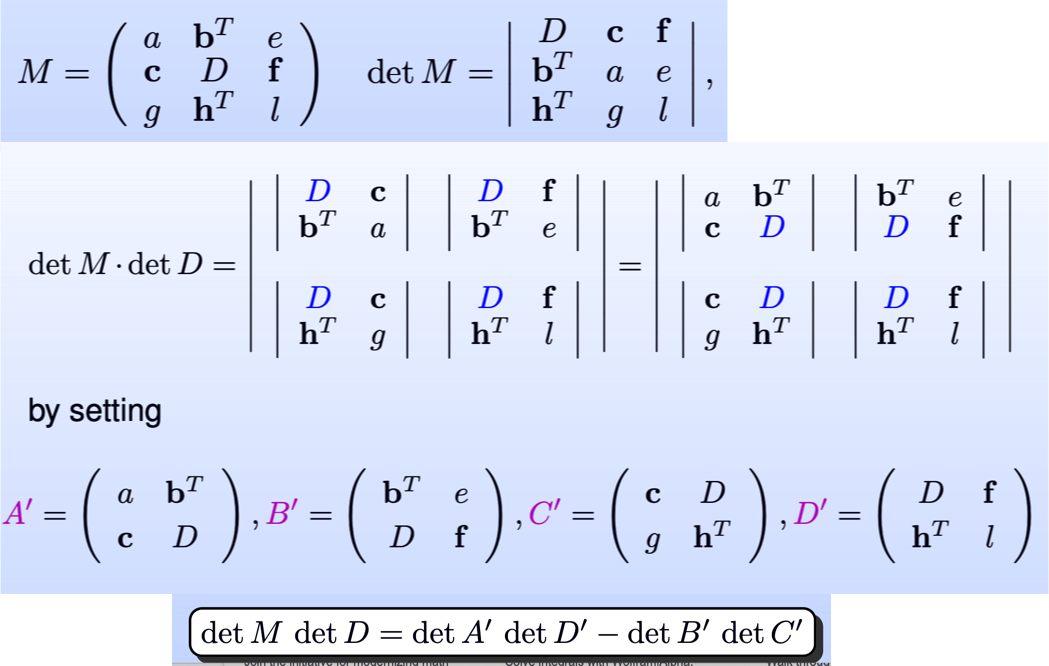MathWorld presents the following two versions of Sylvester's determinant identity, relating to an $n\times n$ matrix $\mathbb{A}$:
First: $$ |\mathbb{A}||A_{r\,s,p\,q}| = |A_{r,p}||A_{s,q}| - |A_{r,q}| |A_{s,p}| $$
where $r$ and $s$ ($p$ and $q$) are sets that indicate which rows (columns) of $\mathbb{A}$ are to be deleted (correcting MathWorld's typo).
Second:
$$
|\mathbb{A}|\left[ a_{k\,k}^{(k-1)}\right]^{n-k-1}
=
\left|
\begin{matrix}
a_{k+1\, k+1}^{(k)} & \cdots & a_{k+1\, n}^{(k)} \\
\vdots & \ddots & \vdots \\
a_{n\, k+1}^{(k)} & \cdots & a_{n\, n}^{(k)} \\
\end{matrix}\right|
$$
where
$$ a_{i\, j}^{(k)} = \left| \begin{matrix} a_{11} & \cdots & a_{1\,k} & a_{1 \, j} \\ \vdots & \ddots & \vdots& \vdots \\ a_{k\ 1} & \cdots & a_{k\,k}& a_{k\, j} \\ a_{i\ 1} & \cdots & a_{i\, k} & a_{i\, j} \\ \end{matrix} \right| $$
for $k<i$, $j \leq n$.
Would anyone help me prove that these two versions are indeed equivalent.
Note: As has been pointed our below, MathWorld's claim is obviously (using a counterexample) incorrect; the second version implies only a special case (when r,s,p,q are single numbers) of the first 'version'.


